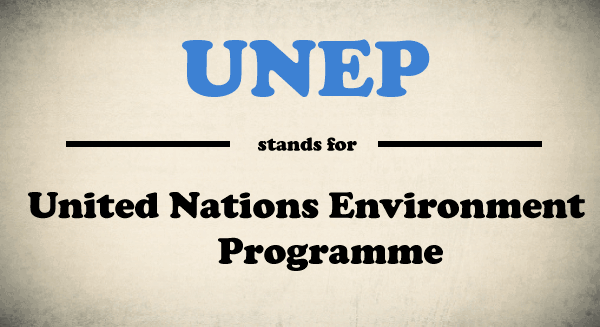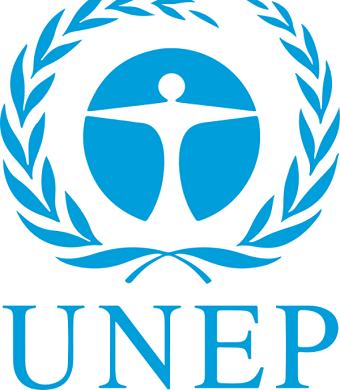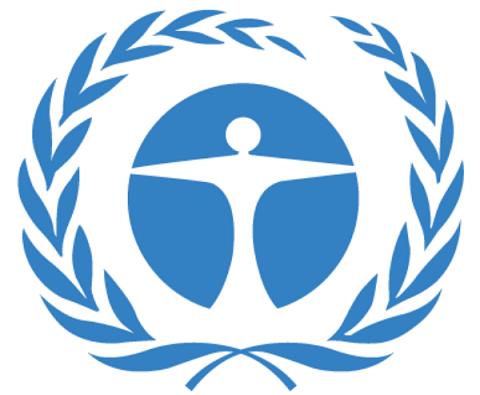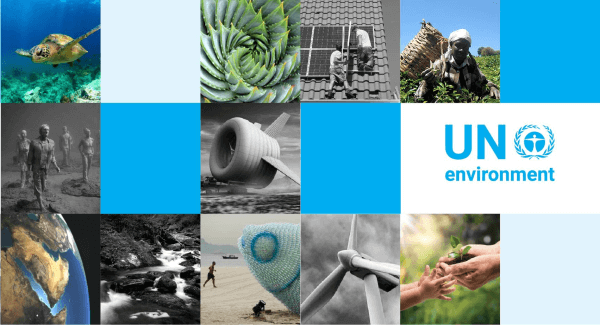What is the full form of UNEPUNEP: Net Asset ValueUNEP stands for United Nations Environment Programme. The United Nations Environment Programme must coordinate efforts to address environmental concerns within the UN system (UNEP). Its objectives are to give leadership and provide solutions concerning various issues, such as climate change, managing marine, and terrestrial ecosystems, and green economic growth. Additionally, the group creates worldwide environmental treaties, disseminates, and promotes ecological knowledge, and aids national governments in meeting environmental goals. 
The United Nations Development Group, of which UNEP is a part, is the organization behind the 17 Sustainable Development Goals. There are secretariats for the Convention on Biological Diversity (CBD), the Convention on International Trade in Endangered Species of Wild Fauna and Flora, and the Convention on Migratory Species inside UNEP (CITES). In the Multilateral Fund for Implementing the Montreal Protocol and the Global Environment Facility (GEF), many started Agencies, including UNEP. 1988 saw the establishment of the Intergovernmental Panel on Climate Change by the UNEP and the World Meteorological Organization. UN Environment is another name that UNEP occasionally uses. HistoryEven in emerging countries, people did not widely acknowledge the necessity for global environmental regulation in the 1970s. Some contend that developing countries should not prioritize ecological issues. The Canadian envoy Maurice Strong persuaded many governments of developing countries to prioritize this subject. Professor Adebayo Adedeji of Nigeria said that Mr. Strong quickly established that and all of us, regardless of our developmental stage, have a significant stake in the issue via the sincerity of his advocacy. The Stockholm Conference, also known as the United Nations Conference on the Human Environment, was called in 1972 following the establishment of institutions such as the International Labor Organization, the Food and Agriculture Organization, and the World Health Organization. Numerous subjects were covered during this meeting, including pollution, the protection of resources, environmental change, and natural and biological disasters. The United Nations Environment Program was eventually established due to this conference, which also produced the Stockholm Declaration, which was a declaration on the state of the human environment (UNEP). Resolution 2997 of the General Assembly established the UNEP. They constructed the headquarters in Nairobi, Kenya, and now house 300 employees, 100 professionals from various industries, and a five-year fund totalling more than US$100 million. The United States pledged $40 million at one time, while 50 other nations contributed the remaining $50 million. The Environmental Fund, to which all UNEP member nations contribute, is the primary funding source for UNEP programs. 
The headquarters site became a primary source of contention, with rich nations favouring Geneva, the home of several other UN offices. In contrast, developing countries tended to Nairobi, the first international institution to have its headquarters in the Global South. Initially competing to host the center, Mexico City, New Delhi, and Cairo withdrew in support of Nairobi in a display of "Third World solidarity." The development of a new formal entity for environmental governance was "not greatly welcomed" by many developing nations, but they did so out of "Southern solidarity". People believed that the choice to locate UNEP in Nairobi was "explicitly political." The Cambridge-based, IUCN-sponsored World Conservation Monitoring Centre joined UNEP in 2000. GovernanceAdministration Executive DirectorThe UN General Assembly unanimously chose Maurice Strong to lead the UN Environment as its first administrator in December 1972. In addition, he held the position of secretary-general for both the Earth Summit and the 1972 United Nations Conference on the Human Environment (1992). Mostafa Kamal Tolba then held the job for 17 years (1975-1992) and was crucial in elevating environmental concerns to the fore of international thought and action. Under his direction, the Montreal Protocol was negotiated, which resulted in the UN Environment program's most notable achievement-the historic 1987 accord to protect the ozone layer. Elizabeth Dowdeswell (1992-1998), Klaus Töpfer (1998-2006), Achim Steiner (2006-2016), and Erik Solheim all followed in his footsteps (2016-2018). As soon as Erik Solheim left his position in November 2018, Joyce Msuya was named as the UNEP's acting executive director. She served as UNEP's deputy executive director before being appointed. António Guterres, the secretary-general of the UN, nominated Inger Andersen as the organization's executive director in February 2019. Environment AssemblyThis was founded in 2012 to carry the place of the Governing Council, and presently it has 193 associates and convenes every two years. StructureEight divisions make up the UNEP organizational structure.
ActivitiesThe primary activities of UNEP include: Changing ClimateThe Territorial Approach to Climate Change, which involves governmental organizations in efforts to increase climate resilience, counts UNEP as a partner. Conflicts and DisastersThe UNEP has tried to reduce the negative health effects of emergencies and natural disasters and prepare for potential future disasters. It allows diminishing the cause of catastrophes by regulating ecosystem equilibrium and industriously supporting the Sendai Framework for Disaster Danger Reduction, which seeks to reduce the risk of disasters (DRR). In addition to working to stop natural disasters, the UNEP aids nations in establishing laws or other measures to guard against catastrophic harm from disasters. It has assisted 40 countries in recovering from the effects of disasters since 1999. To participate in reaching the Sustainable Development Goals, governments, non-governmental organizations, and the general public can use the information and data that UNEP provides on the global environment. The data shared by UNEP is accurate and based on the most recent scientific research, and this helps decision-makers locate trustworthy information quickly. As a result, those associated with The Environment Outlook and the Sustainable Development Goals have easy access to information. The UN Environment Live Platform and Online View to Research in Environment also made it easy to access UNEP's publicly available data (OARE). Award CeremoniesThe leading articles are champions of the Earth and the Global 500 Roll of Honor. Numerous awards programs have been established to recognize exceptional achievements in the environmental sector. Initiated in 1987, the Global 500 Roll of Honour ran until 2003. Champions of the Earth, its replacement from 2005, and the equivalent Young Champions of the Earth are presented yearly to businesspeople, researchers, public officials, up-and-coming artists, people, and groups that significantly improve local resources and the environment. Notable SuccessesThe 1987 Montreal Protocol for regulating emissions of substances responsible for diminishing the ozone layer of the earth and the 2012 Minamata Convention, a pact to control harmful mercury emissions, are only a few accomplishments that UNEP has listed. UNEP has financed the creation of solar financing programs with attractive return rates. To cover the upfront expenses of solar deployment and encourage customers to think about and buy solar PV systems. The most well-known instance is the UNEP-sponsored solar loan initiative, which assisted 100,000 people in India finance solar power systems. India's solar program's success has inspired similar projects. Due to solar program's success, similar initiatives have been started in other developing nations, such as Tunisia, Morocco, Indonesia, and Mexico. 
When UNEP released satellite photographs in 2001 revealing that 90% of the marsh had been gone, it raised awareness about the loss of the Marshlands. To manage the marshland region in an environmentally responsible way, the UNEP launched its "assistance for environmental management of the Iraqi Marshland" program in 2004. Tunza is a program run by UNEP for young people. Other initiatives, such as the AEO for Youth, are part of this program. Program for International Environmental Education (1975-1995)The International Environmental Education Programme, which ran from 1975 to 1995 and provided advice on mobilizing education, was co-led by UNESCO and UNEP for two decades to promote ecological awareness. As the official publication of the UNESCO-UNEP International Environmental Education Programme(IEEP), UNESCO debuted the environmental education newsletter Connect in 1976. Until 2007, it served as a clearing house for the exchange of knowledge about ecological education generally and for precisely promoting the objectives and initiatives of the IEEP. It also served as a network for organizations and people interested in and involved in environmental education. Changing WeatherIf the global warming trend is not halted by 2000, UNEP warned that "entire nations could be wiped off the face of the Earth by sea level rise" in 1989, 33 years ago. Seventeen years ago, in 2005, UNEP stated that "by 2010, 50 million people may become environmental refugees as they flee the effects of climate change." According to the UNEP, glaciers retreat historically, and many could vanish within decades. Scientists monitoring the condition of over 30 glaciers worldwide discovered that ice loss hit unprecedented levels in 2006. The glaciers shrunk by 4.9 feet on average in 2006. In 2006, the Breidalblikkbrea glacier in Norway shrunk by 10.2 feet. Between 1980 and 1999, glaciers lost an average of approximately a foot of ice per year, but since 2000, the average loss has accelerated to about 20 inches. Additional details are that, since 1850, glaciers have receded electric automobilesDuring the fifth Magdeburg Environmental Forum in 2008, held in Magdeburg, Germany, Daimler AG, and UNEP pushed for developing an infrastructure for electric vehicles. Under the theme "Sustainable Mobility-the Post-2012 CO2 Agenda," 250 lawmakers and non-government group members addressed the future of road travel. Cyclical EconomyUNEP is the co-chair and a founding partner of the Platform for Accelerating the Circular Economy, a public-private partnership of over 50 international organizations and governments aiming to support the shift to a global circular economy. This partnership includes organizations like the Ellen MacArthur Foundation. Regional Seas InitiativeThis is the only international legislative program for the regional ocean and marine protection established in 1974. Eighteen regional programs created under the Regional Seas Conventions and Action Plans having more than 143 countries participating, with 14 of them supported by legally binding agreements. International treaties with legal force include the Bucharest Convention, the Helsinki Convention, the Oslo Dumping Convention, and the Barcelona Convention. The RSCAPs cover the Caribbean, East Asian, East African seas, the Mediterranean Basin, the Pacific Northwest, West Africa, the Caspian Sea, the Black Sea, the Northeast Pacific, the Red Sea, the Gulf of Aden, the ROPME Sea Area, the South Asian and Southeast Pacific seas, the Pacific, the Arctic, the Antarctic, the Baltic Sea, and the Northeast Atlantic. Each program includes nations that govern their respective seas on a regional scale. Secretariats, Regional Coordinating Units, and Regional Activities Centers are in charge of managing the programs. UNEP promotes international treaties through training and education to safeguard the oceans. 
The Regional Seas Programme's initial regional action plan, the United Nations Environment Programme's (UNEP/MAP) Mediterranean Action Plan, was formed in 1975. Faith for the Earth InitiativeThe administration's program started in 2017, aims to inspire and work with religious institutions to invest in green resources and protect the environment. Faith for Earth: A Call for Action is a book UNEP co-published in 2020 with the Parliament of the World's Religions Climate Action Program. The book emphasizes faith-based organizations role in tackling significant environmental challenges and serves as a learning resource for students, teachers, and leaders everywhere. ReformThe Paris Buzz for Action, put forth by French president J Chirac and reinforced by 46 nations, reached for the UNEP to be substituted by a fresh and better decisive "United Nations Environment Organization," to be modelled after the World Health Organization, following the 2007 publication of the Intergovernmental Panel on Climate Change Fourth Assessment Report. The top four greenhouse gas emitters-the United States, Saudi Arabia, Russia, and China-were noticeably absent from the list of 46 countries, which included members of the European Union. ConclusionFollowing the Rio-20 Summit, the General Assembly of the United Nations decided to "strengthen and improve" the UNEP and create universal membership in its governing body and the Assembly ratified this decision in December 2012.
Next TopicFull Form
|
 For Videos Join Our Youtube Channel: Join Now
For Videos Join Our Youtube Channel: Join Now
Feedback
- Send your Feedback to [email protected]
Help Others, Please Share











